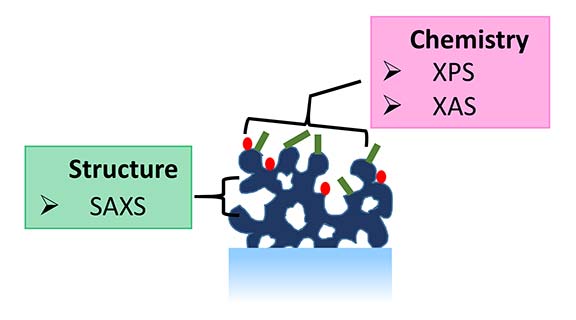X-Ray Characterization of Anti-Soiling PV Coatings
DuraMAT uses small-angle, X-ray scattering (SAXS) to probe nano-scale morphology through the full thickness of an anti-soiling coating on a photovoltaic (PV) module. We can do measurements before, during, and after exposure to environmental stressors (heat, humidity, soil).
To complement SAXS measurements, X-ray photoelectron spectroscopy (XPS) and X-ray absorption spectroscopy (XAS) provide insight into changes in the surface chemistry and local bonding. While XPS provides a broader view of the chemistry and composition of the coating surface, XAS can probe specific chemical bonds in greater detail.
Together, these techniques provide insight into how environmental stresses influence degradation mechanisms of anti-soiling coatings. Anti-soiling coatings rely on an interplay of surface energy/chemistry and morphology to discourage soiling and encourage self-cleaning at the top surface of PV modules.
Core Objective
Location
SLAC National Accelerator Laboratory (SLAC)
Applications
Our X-ray characterization methods have primarily been used to study the progression of morphology and surface chemistry of anti-soiling coatings. However, the techniques described above could be used in any instance where measuring the progression either morphology and/or chemistry is of value. For example, recent work has begun to look at changes in polymer backsheet morphology.
Availability
The scattering and spectroscopy measurements can be accessed through proposals to Stanford Synchrotron Radiation Lightsource (SSRL) or through collaboration with SLAC DuraMAT team members.
Contact
To learn more about this capability, contact Laura Schelhas.
